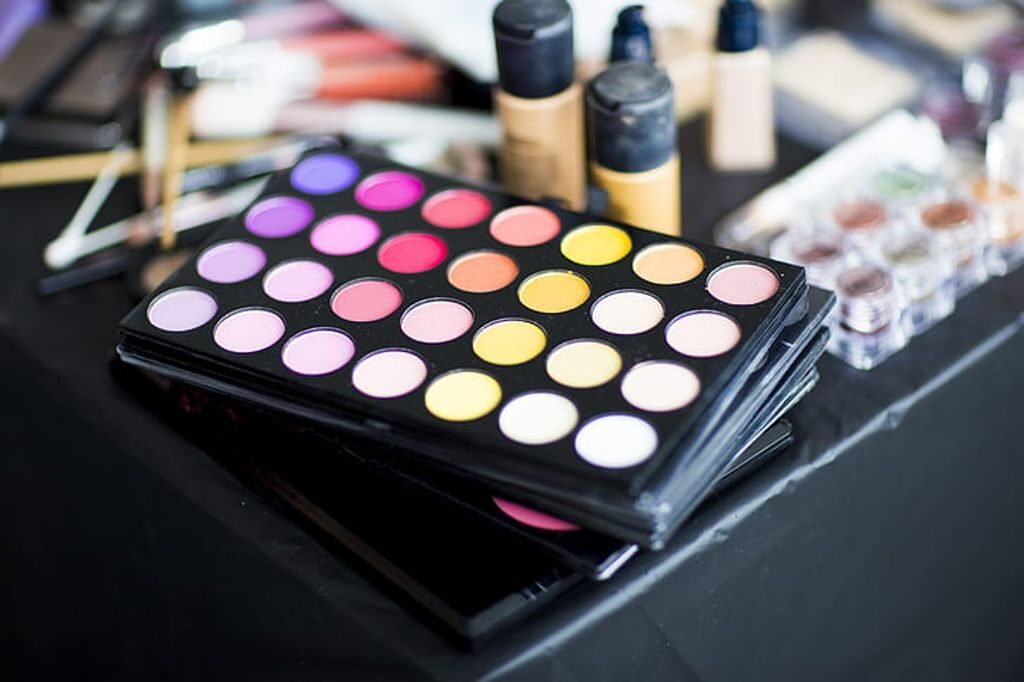Cosmetics have been an integral part of human history, evolving from ancient beauty practices to the modern cosmetic industry. As the beauty industry continues to grow, ethical practices and ingredients in cosmetics are becoming increasingly important. This article explores the evolution of cosmetics, the ingredients used, and the ethical considerations in the beauty industry.
Key Takeaways
- Cosmetics have a rich history that dates back to ancient beauty practices.
- The modern cosmetic industry is constantly evolving with new trends and technologies.
- Natural ingredients in cosmetics are gaining popularity due to their perceived benefits.
- Common allergens in cosmetics can cause adverse reactions in some individuals.
- Ethical practices such as cruelty-free cosmetics and sustainable packaging solutions are becoming more prevalent in the beauty industry.
The Evolution of Cosmetics

Ancient Beauty Practices
The allure of beauty is timeless, and the quest for aesthetic enhancement dates back to the earliest civilizations. Cosmetics were not only used for beautification but also held cultural and spiritual significance.
Egyptians are renowned for their elaborate use of makeup, with kohl-lined eyes and red ochre lips serving as iconic symbols of ancient beauty. Other cultures, such as the Greeks and Romans, also embraced cosmetic practices, utilizing substances like ground minerals and plant extracts.
- Egyptians used kohl to line their eyes, believed to ward off evil spirits.
- Greeks favored pale skin, often achieved with powders containing lead.
- Romans emphasized cleanliness and often used oils and scrubs.
The use of cosmetics in ancient times was deeply intertwined with societal norms and health practices, often reflecting the values and beliefs of the era.
Modern Cosmetic Industry
The modern cosmetic industry has undergone a significant transformation, driven by technological advancements and changing consumer demands. Innovation in product formulation and marketing strategies has led to a diverse range of beauty products tailored to individual needs.
Beauty trends now heavily influence product development, with social media playing a pivotal role in shaping consumer preferences. The industry has seen a surge in the following areas:
- Personalization of products
- Inclusion of digital technology
- Emphasis on ethical sourcing and production
The rise of e-commerce platforms has revolutionized the way cosmetics are sold, making them more accessible to a global audience. This shift has not only changed purchasing habits but also the way brands interact with their customers.
Future Trends in Cosmetics
As we look towards the future, the cosmetics industry is poised to embrace innovative technologies and personalized experiences. Customization is becoming a key trend, with products tailored to individual skin types, tones, and concerns. Advances in biotechnology may soon allow for cosmetics that adapt in real-time to our skin’s changing conditions.
Smart beauty devices are on the rise, offering consumers high-tech solutions for skin analysis and product application. These gadgets are not just futuristic novelties but are becoming integral to daily beauty routines.
- Augmented reality (AR) and virtual reality (VR) will revolutionize the way we try on makeup, with virtual try-on apps becoming more sophisticated.
- Sustainable and eco-friendly products will continue to grow in popularity as consumers become more environmentally conscious.
- The use of artificial intelligence (AI) in creating personalized skincare and makeup routines is expected to expand.
The intersection of technology and beauty is creating a new landscape where the power of personalization and efficiency is paramount. This synergy is not only enhancing the consumer experience but also pushing the boundaries of what cosmetics can achieve.
Ingredients in Cosmetics

Natural vs Synthetic Ingredients
The debate between natural and synthetic ingredients in cosmetics is ongoing. Natural ingredients are derived from plants and minerals and are often touted for their gentleness and compatibility with the skin. On the other hand, synthetic ingredients are created in laboratories and can be more consistent in quality and effectiveness.
Efficacy is a key factor when comparing these two types of ingredients. While some consumers prefer natural ingredients for their perceived safety, others opt for synthetic alternatives for their potent results and longer shelf life.
- Natural ingredients may include aloe vera, tea tree oil, and shea butter.
- Synthetic ingredients can range from preservatives like parabens to artificial fragrances.
It’s essential to consider individual skin types and concerns when choosing between natural and synthetic ingredients in cosmetics.
Consumers are increasingly looking for products that align with their values, whether that’s using all-natural formulations or embracing the innovation of synthetic compounds. Ultimately, the choice between natural and synthetic ingredients should be informed by personal preference, skin sensitivity, and desired outcomes.
Common Allergens in Cosmetics
Cosmetics, while designed to enhance beauty, can sometimes cause adverse reactions due to the presence of allergens. Fragrances and preservatives are among the most common culprits, often leading to skin irritation or allergic reactions. It’s important for consumers to be aware of the ingredients in their beauty products and understand how they can affect sensitive skin.
Parabens, for example, are widely used preservatives that have been identified as potential allergens. Consumers looking to avoid these substances can look for paraben-free labels on their cosmetic products. Other common allergens include:
- Nickel, often found in metallic cosmetic packaging
- Formaldehyde and formaldehyde-releasing preservatives
- Certain dyes and pigments
- Lanolin, a natural ingredient derived from sheep’s wool
While not everyone is sensitive to these ingredients, those with allergies should pay special attention to product labels and seek hypoallergenic options. Patch testing a new cosmetic on a small area of skin can help to identify any potential reactions before applying the product more broadly.
Understanding the potential allergens in cosmetics can help consumers make informed choices and avoid unnecessary discomfort. Manufacturers are increasingly recognizing the importance of this issue and are working to create formulations that are safe for all skin types.
Ethical Practices in the Beauty Industry

Cruelty-Free Cosmetics
Cruelty-free cosmetics are products developed without any form of animal testing at any stage of their creation. This ethical stance is not only about the end product but also extends to the ingredients used. Brands that commit to cruelty-free practices often receive certifications from organizations like Leaping Bunny or PETA, which consumers can look for when making purchasing decisions.
Transparency in labeling has become a crucial factor for consumers who are increasingly conscious of the ethical implications of their purchases. As a result, many companies are now highlighting their cruelty-free status prominently on their packaging.
- Ethical sourcing of ingredients
- Implementation of alternative testing methods
- Partnerships with cruelty-free suppliers
The choice to support cruelty-free cosmetics goes beyond personal beauty preferences; it reflects a commitment to animal welfare and ethical responsibility in the beauty industry.
Sustainable Packaging Solutions
The beauty industry is increasingly embracing sustainable packaging solutions to reduce its environmental footprint. Eco-friendly packaging is not just a trend; it’s a commitment to the planet that resonates with consumers. Companies are exploring various materials and designs that are both aesthetically pleasing and kind to the environment.
Biodegradable materials, such as plant-based plastics and recycled paper, are becoming more prevalent. These materials decompose more quickly than traditional plastics, leaving a lesser impact on the earth. Additionally, refillable containers are gaining popularity, allowing consumers to reuse packaging and minimize waste.
- Use of recycled materials
- Implementation of refill systems
- Reduction in packaging size and complexity
Embracing sustainability in packaging is a step towards a greener future for the beauty industry. It reflects a growing consciousness among consumers and brands alike about the importance of environmental stewardship.
As we strive for a more ethical and sustainable future, it’s crucial to support beauty brands that prioritize eco-friendly practices and ethical sourcing. At CoffeeWithView.com, we’re committed to offering products that align with these values. From bamboo stick cotton swabs to paraben-free body wash, our selection is curated with care for both you and the planet. Join us in making a positive impact by exploring our range of ethical beauty essentials. Make your next purchase a step towards a more beautiful world—visit our website now!
Conclusion
In conclusion, cosmetics play a significant role in enhancing beauty, boosting confidence, and expressing individuality. From skincare products to makeup items, the cosmetics industry continues to evolve and innovate to meet the diverse needs of consumers. As we navigate the world of cosmetics, it is important to prioritize safety, sustainability, and inclusivity. Embracing the power of cosmetics can be a form of self-care and self-expression, allowing individuals to feel empowered and confident in their own skin.
Frequently Asked Questions
What are some common allergens found in cosmetics?
Common allergens in cosmetics include fragrances, preservatives, and certain dyes. It’s important to check product labels for these ingredients if you have sensitive skin or allergies.
How can I identify cruelty-free cosmetics?
Look for products that are certified by organizations like PETA or Leaping Bunny. These certifications ensure that the products were not tested on animals during any stage of production.
What are sustainable packaging solutions in the beauty industry?
Sustainable packaging solutions in the beauty industry include using recyclable materials, reducing excess packaging, and opting for biodegradable options. Brands are also exploring refillable packaging to minimize waste.
What is the difference between natural and synthetic ingredients in cosmetics?
Natural ingredients are derived from plants, minerals, or animals, while synthetic ingredients are created in a lab. Both types of ingredients can be used in cosmetics, but natural ingredients are often preferred for their perceived safety and environmental impact.
Why is it important to choose cruelty-free cosmetics?
Choosing cruelty-free cosmetics helps to support ethical practices in the beauty industry and promotes the well-being of animals. By opting for cruelty-free products, consumers can make a positive impact on animal welfare.
What are some ancient beauty practices that influenced the evolution of cosmetics?
Ancient beauty practices like using natural oils, herbs, and minerals for skincare and makeup have influenced the development of modern cosmetics. These traditional practices laid the foundation for many cosmetic formulations we use today.



